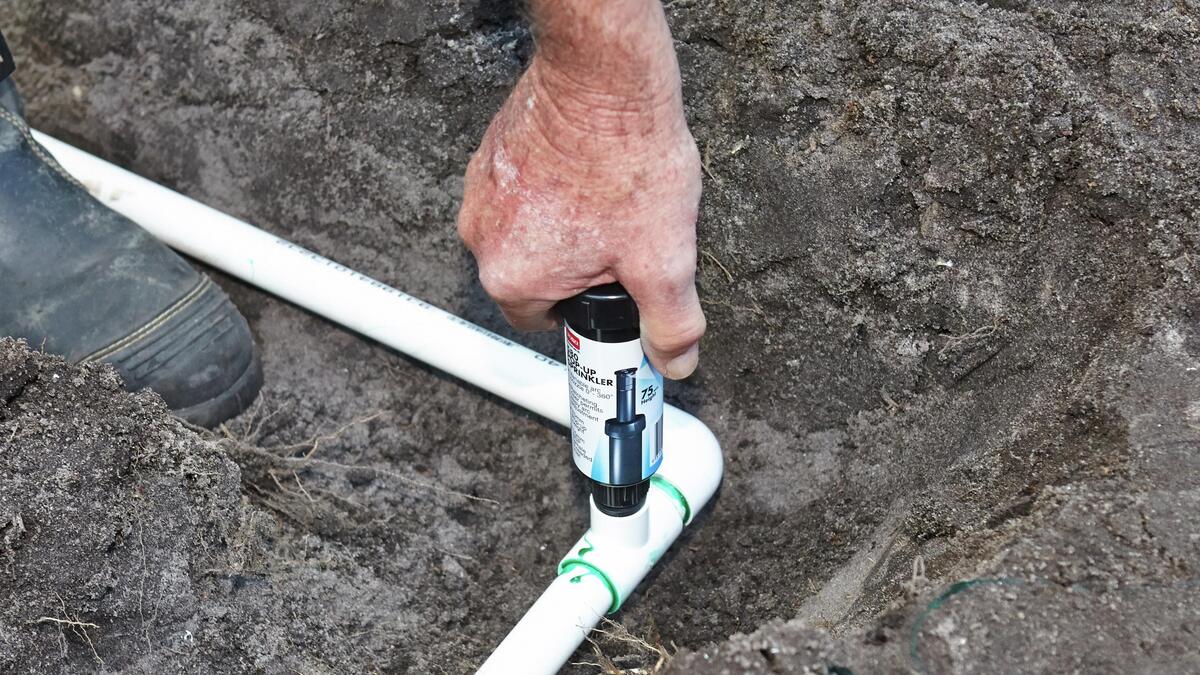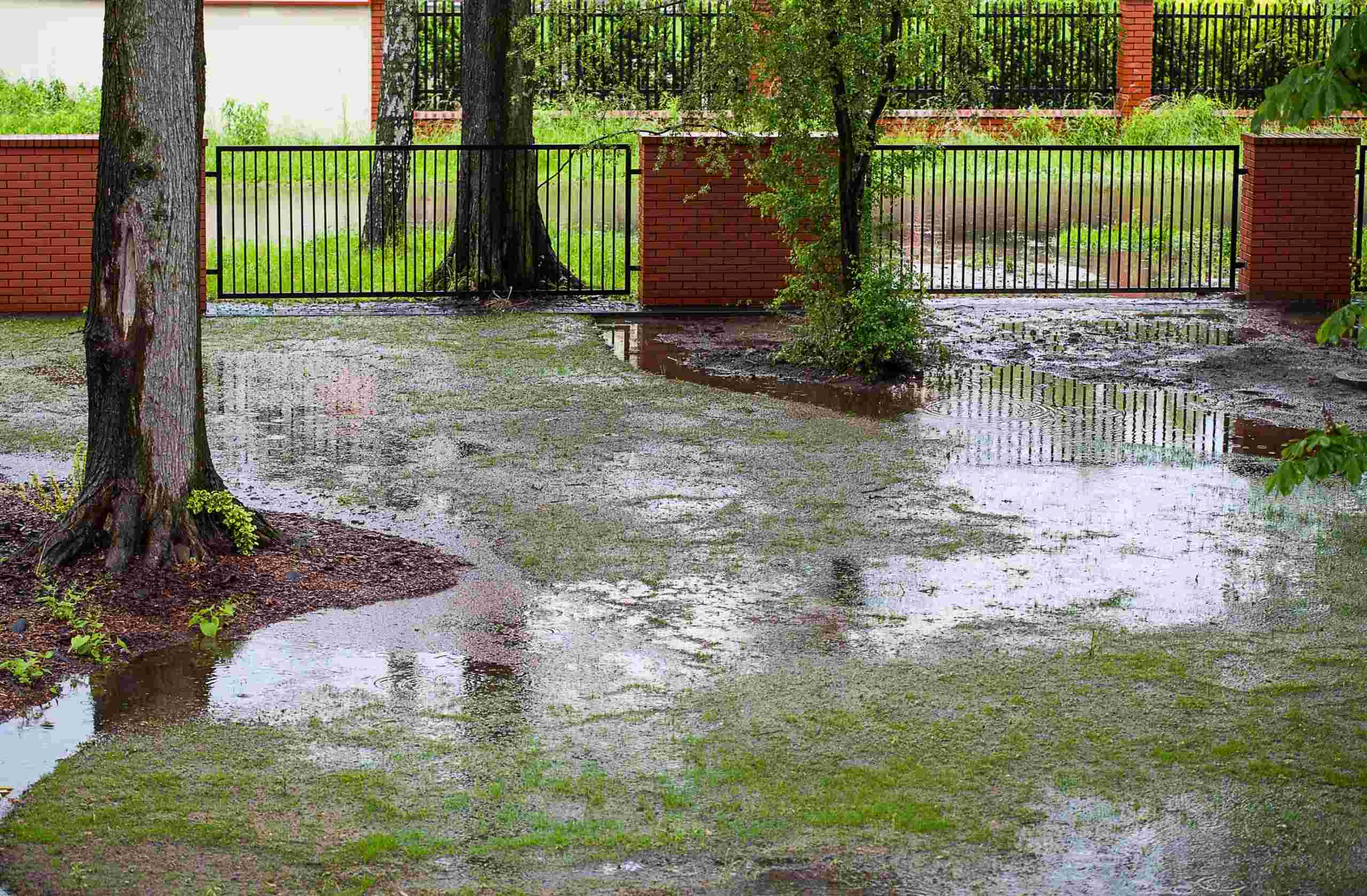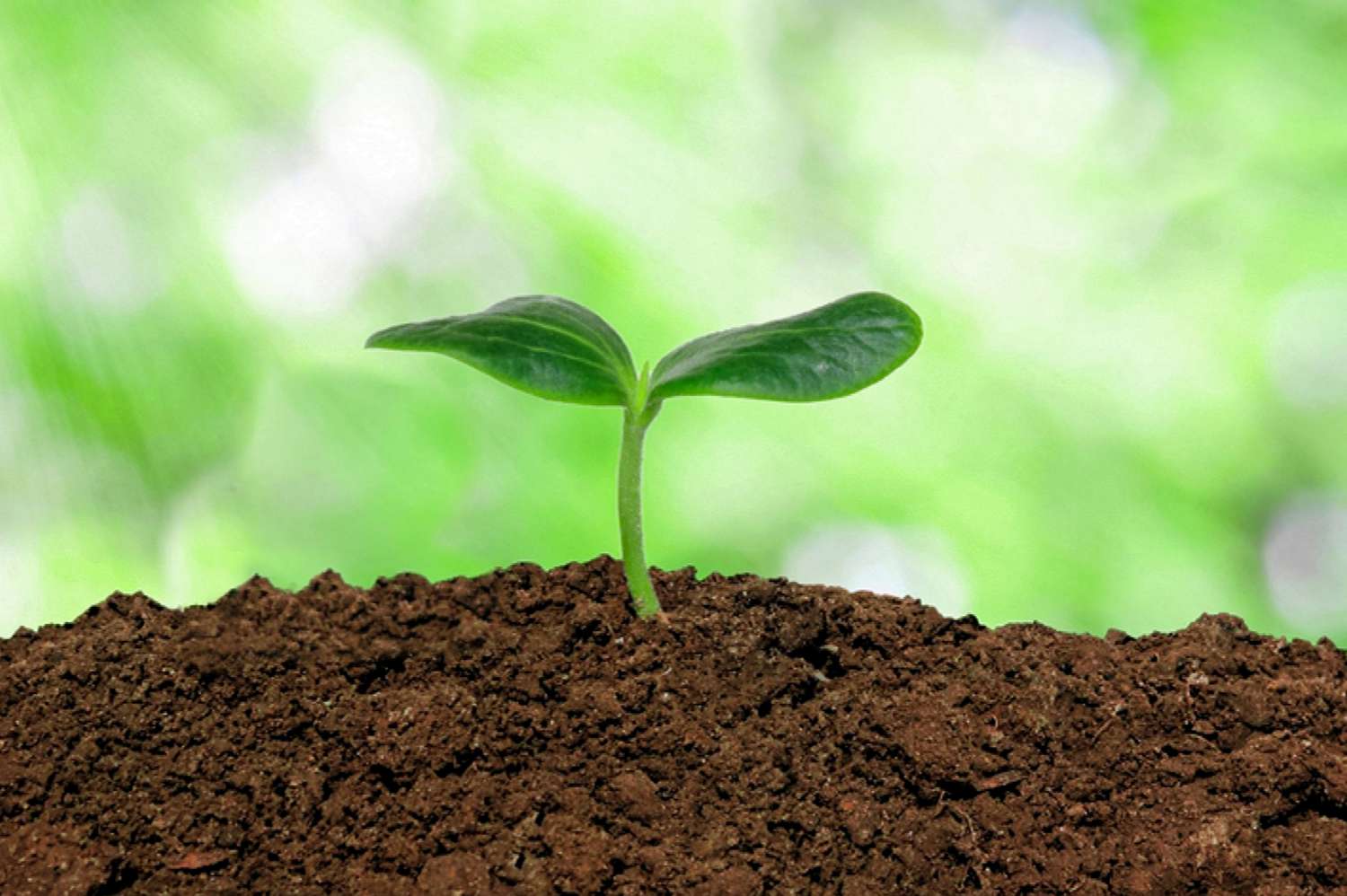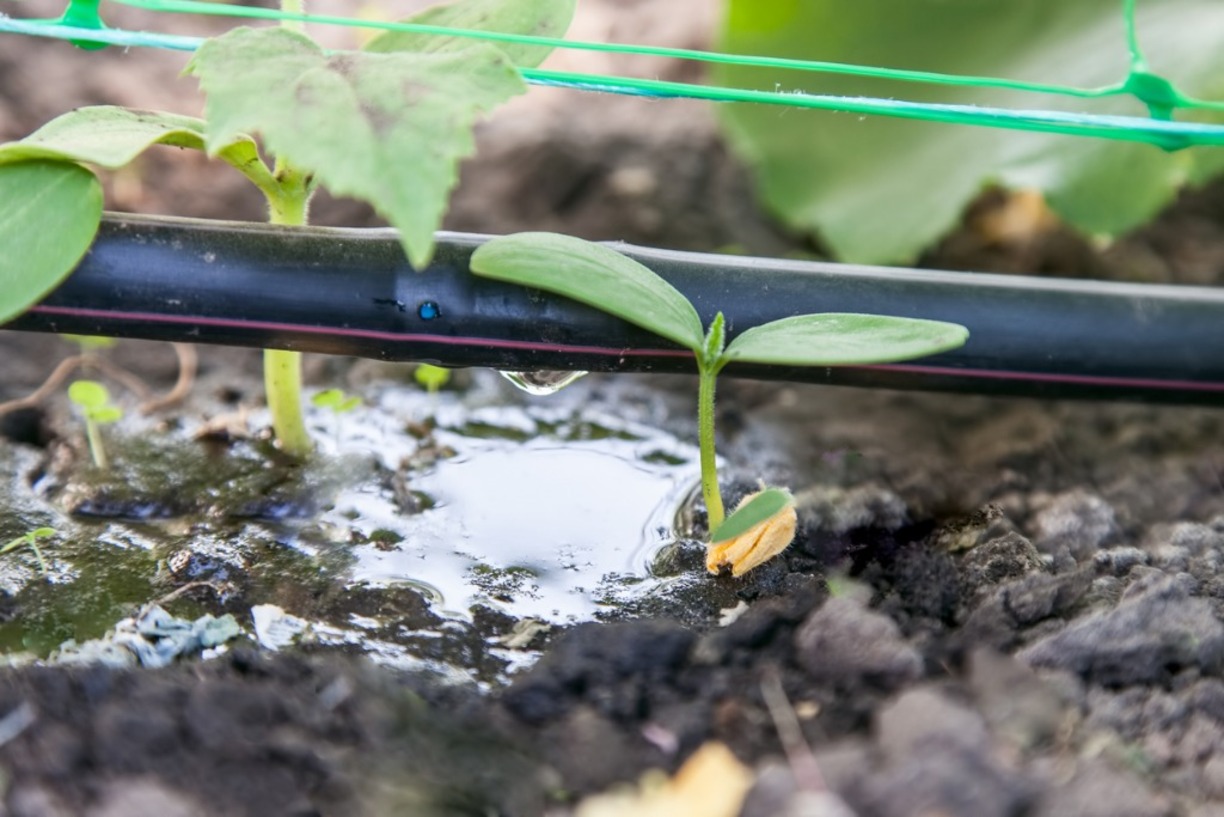Home>Gardening Tips and Tricks>Problem Solving>How To Fix Hydrophobic Potting Soil


Problem Solving
How To Fix Hydrophobic Potting Soil
Published: February 6, 2024
Learn effective methods for solving the issue of hydrophobic potting soil and restore moisture balance to your plants. Get expert tips and techniques for fixing this common gardening problem.
(Many of the links in this article redirect to a specific reviewed product. Your purchase of these products through affiliate links helps to generate commission for Chicagolandgardening.com, at no extra cost. Learn more)
Table of Contents
Introduction
Welcome to the world of gardening, where the joy of nurturing plants is a gratifying experience. However, even the most seasoned gardeners encounter challenges along the way. One such common issue is dealing with hydrophobic potting soil, which can hinder the growth and well-being of your beloved plants. Fortunately, with the right knowledge and techniques, this problem can be effectively remedied, allowing your plants to thrive once again.
Hydrophobic potting soil poses a significant obstacle to successful gardening. When soil becomes hydrophobic, it repels water rather than absorbing it, leading to dry patches and inadequate moisture retention. This can result from various factors, such as the use of low-quality potting mix, excessive exposure to sunlight, or prolonged lack of water. As a result, water tends to run off the soil surface instead of being absorbed, making it challenging to adequately hydrate your plants.
Understanding the nature of hydrophobic potting soil and the factors contributing to its development is crucial in addressing this issue effectively. By gaining insight into the underlying causes, you can implement the appropriate methods to restore the soil's water retention capabilities and create an optimal environment for your plants to flourish.
In the following sections, we will delve into the intricacies of hydrophobic potting soil, explore the methods for rectifying this condition, and provide a detailed, step-by-step guide for applying the fix. By the end of this article, you will be equipped with the knowledge and confidence to tackle hydrophobic soil issues and rejuvenate your gardening endeavors. Let's embark on this journey to restore moisture balance and vitality to your potting soil, ensuring that your plants receive the nurturing environment they deserve.
Understanding Hydrophobic Potting Soil
Hydrophobic potting soil, also known as water-repellent soil, is a condition in which the soil particles resist the absorption of water, leading to poor moisture retention. This phenomenon occurs when the organic matter in the soil breaks down and forms a waxy coating around the soil particles, preventing water from penetrating the surface. As a result, the water tends to bead up and run off the soil, rather than being distributed evenly to nourish the plants.
Several factors contribute to the development of hydrophobic potting soil. One of the primary causes is the decomposition of organic matter, such as peat moss and other organic compounds, which can create a water-repellent layer on the soil particles. Additionally, prolonged exposure to sunlight and inadequate watering practices can exacerbate the hydrophobic condition, as the soil becomes increasingly desiccated and resistant to moisture absorption.
It is essential to recognize the signs of hydrophobic potting soil to address the issue promptly. Visible indicators include dry, cracked soil surfaces, water pooling on the soil instead of being absorbed, and uneven distribution of water within the pot. When left unattended, hydrophobic soil can lead to water stress in plants, hindering their growth and vitality.
Furthermore, understanding the underlying causes of hydrophobic potting soil enables gardeners to take preventive measures to mitigate its occurrence. By selecting high-quality potting mix, incorporating organic amendments, and implementing proper watering practices, it is possible to minimize the risk of soil hydrophobia and maintain an optimal growing environment for plants.
By gaining a comprehensive understanding of hydrophobic potting soil, gardeners can proactively address this issue and create a conducive environment for plant growth. In the following sections, we will explore effective methods for remedying hydrophobic soil and provide practical guidelines for implementation.
Methods for Fixing Hydrophobic Potting Soil
Remediating hydrophobic potting soil requires the application of targeted methods to restore its water-absorbing properties and promote optimal moisture retention. Several effective approaches can be employed to address this issue and rejuvenate the soil for healthy plant growth.
One method for fixing hydrophobic potting soil involves the use of wetting agents or soil surfactants. These substances work by reducing the surface tension of water, allowing it to permeate the soil more effectively. When applied to the affected soil, wetting agents help break down the water-repellent barriers and facilitate uniform water distribution, promoting enhanced hydration for the plants.
Another effective approach is the incorporation of organic matter into the soil. Adding compost, well-rotted manure, or other organic amendments can improve the soil structure and enhance its water-holding capacity. Organic matter acts as a sponge, absorbing and retaining moisture within the soil, thereby counteracting the effects of hydrophobia and fostering a conducive environment for plant roots to thrive.
Aeration is a crucial method for addressing hydrophobic potting soil, particularly in potted plants. By gently aerating the soil with a fork or small tool, gardeners can alleviate compaction and improve the soil’s ability to absorb water. This process promotes better water penetration and encourages the rehydration of the soil, mitigating the effects of hydrophobia and revitalizing the growing medium.
Furthermore, the practice of deep watering is instrumental in remedying hydrophobic soil. Instead of frequent, shallow watering, which can exacerbate the issue, deep watering allows the moisture to penetrate the soil more effectively, reaching the root zone and promoting thorough rehydration. By adjusting watering techniques to encourage deep moisture penetration, gardeners can address hydrophobic soil and support the overall health of their plants.
These methods, when applied thoughtfully and in combination, offer effective solutions for fixing hydrophobic potting soil and restoring its capacity to retain moisture. In the subsequent section, we will provide a detailed, step-by-step guide for implementing these remediation methods, empowering gardeners to revive their soil and nurture flourishing plants.
Applying the Fix: Step-by-Step Guide
Implementing the remedies for hydrophobic potting soil involves a systematic approach to ensure thorough and effective soil rejuvenation. By following a step-by-step guide, gardeners can address the issue with precision and foster an optimal growing environment for their plants.
Step 1: Assessment
Begin by assessing the extent of hydrophobia in the potting soil. Look for visible signs, such as dry, cracked soil surfaces and water pooling on the soil instead of being absorbed. This evaluation will guide the subsequent remediation efforts and help determine the most suitable methods for addressing the issue.
Step 2: Application of Wetting Agents
Utilize a high-quality wetting agent or soil surfactant to facilitate water penetration in the affected soil. Follow the manufacturer’s instructions for application, ensuring even distribution and thorough coverage of the soil surface. The wetting agent will work to break down the water-repellent barriers and promote enhanced moisture absorption.
Step 3: Incorporation of Organic Matter
Add organic amendments, such as compost or well-rotted manure, to the potting soil. Gently work the organic matter into the soil, ensuring uniform blending. The organic amendments will improve the soil’s water-holding capacity and aid in restoring its moisture retention properties.
Step 4: Aeration
Using a fork or small tool, aerate the soil to alleviate compaction and enhance its ability to absorb water. Carefully loosen the soil to promote better water penetration and distribution. Aeration is crucial for revitalizing the soil and mitigating the effects of hydrophobia.
Step 5: Deep Watering
Adjust the watering technique to incorporate deep watering practices. Ensure that the water penetrates the soil to reach the root zone, promoting thorough rehydration. Avoid shallow watering, which can exacerbate hydrophobia, and instead focus on nurturing deep moisture penetration within the soil.
By diligently following these steps and applying the recommended remedies, gardeners can effectively address hydrophobic potting soil and create an environment conducive to healthy plant growth. The systematic implementation of these methods will contribute to the revitalization of the soil and the overall well-being of the plants it nurtures.
Conclusion
As a gardener, encountering hydrophobic potting soil can present a formidable challenge, but with the right knowledge and techniques, this issue can be effectively remedied. By understanding the nature of hydrophobic soil and the factors contributing to its development, gardeners can proactively address this condition and create an optimal environment for plant growth.
The methods for fixing hydrophobic potting soil, including the application of wetting agents, incorporation of organic matter, aeration, and deep watering, offer effective solutions for revitalizing the soil and restoring its capacity to retain moisture. When applied in a systematic and thoughtful manner, these methods can mitigate the effects of hydrophobia and nurture flourishing plants.
By following the step-by-step guide for applying the remedies, gardeners can embark on a journey to rejuvenate their potting soil and promote the well-being of their beloved plants. The systematic implementation of these methods, coupled with a keen understanding of the underlying causes of hydrophobic soil, empowers gardeners to nurture a thriving and vibrant garden.
As you navigate the intricacies of gardening, remember that challenges such as hydrophobic potting soil are opportunities to learn and grow. By equipping yourself with the knowledge and techniques to address these challenges, you are fostering a nurturing environment for your plants and cultivating a deeper connection with the natural world.
With perseverance and a touch of green-thumb magic, you can conquer the hydrophobic soil dilemma and witness the flourishing beauty of your garden in full bloom once more. Embrace the journey, celebrate the growth, and revel in the abundance of nature’s resilience.





